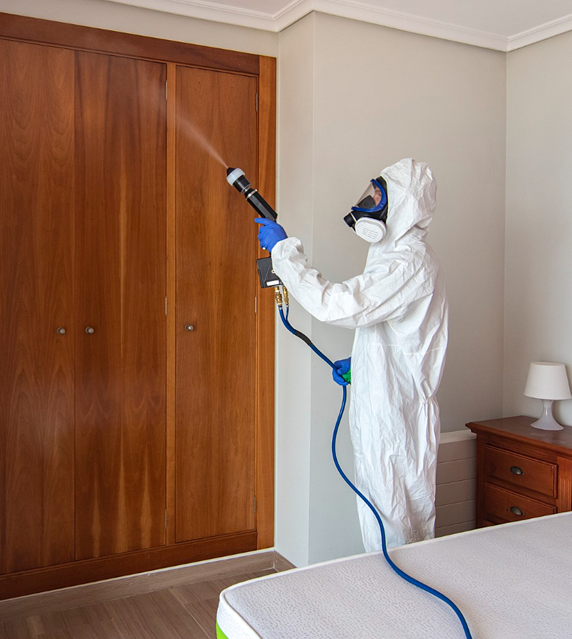
In the ever-evolving landscape of urban pest management, fumigation applications have long held a reputation for their power to combat deep-seated infestations. Whether it’s protecting commercial warehouses along the Don Valley Parkway, safeguarding apartment units near St. Clair West, or eliminating hidden colonies in industrial facilities near Etobicoke, fumigation remains a vital – yet often misunderstood – component of pest control in the city.
With a dense urban environment, older building stock, and climate conditions that support persistent pest populations, Toronto’s fumigation industry has responded to everything from carpenter ants and termites to mice, cockroaches, and stored-product insects. However, growing awareness around environmental safety, evolving legislation, and tenant protection protocols have led to increased scrutiny.
According to the Ontario Ministry of the Environment, Conservation and Parks, licensed pesticide applicators are required for all structural fumigations, and businesses must comply with federal guidelines set by Health Canada’s Pest Management Regulatory Agency (PMRA), which outlines required ventilation, sealing, and notification procedures. Noncompliance can result in enforcement action or penalties, particularly when fumigants are deployed in multi-unit dwellings, where risks to humans, pets, and indoor air quality are elevated.
Beyond legality, it’s effectiveness hinges on the expertise of the provider. Certified exterminators must ensure correct gas concentrations, exposure time, and airtight sealing for the treatment to reach all areas of the structure, especially in older buildings where rodents, termites, and spiders exploit wall voids and crawl spaces.
Toronto-based pest management professionals face the added challenge of tailoring solutions to a city where residential, commercial, and industrial zones are densely packed – often within a single city block. This has prompted a growing shift toward Integrated Pest Management (IPM) models, where fumigation is used selectively, only after a full inspection and when other methods (such as heat, baiting, and exclusion) have proven insufficient.
When Is Fumigating Necessary? Identifying the Threshold in Toronto Homes and Businesses
While routine pest issues like ants or mice are often resolved through localized treatments, fumigating becomes necessary when infestations are widespread, concealed within walls, attics, or foundations, or when specific insects like drywood termites, wood-boring beetles, or stored-product pests are involved. In Toronto, many of these cases are tied to older commercial properties in Dufferin Grove, Queen Street West lofts, and post-war homes scattered throughout Scarborough and North York.
A full structural fumigation may also be required when dealing with hard-to-reach pests that are immune to contact pesticides. For example, some cockroach infestations in high-rise kitchens or restaurant basements near Kensington Market persist due to pesticide resistance and nesting behind hot equipment, where traditional sprays can’t penetrate.
The following table outlines common scenarios:
| Situation | Common Pests | Preferred Treatment | Notes |
|---|---|---|---|
| Extensive infestation inside wall voids | Termites, carpenter ants | Fumigation or heat | Especially in old structures with shared plumbing |
| Commercial food storage facilities | Beetles, moths, weevils | Structural fumigation | Critical due to food contamination risk |
| Multi-unit residential buildings | Cockroaches, bed bugs | Targeted gas or tenting | Full prep, sealing, and evacuation required |
| Sensitive infestations in childcare/schools | Mice, spiders, wasps | Fumigation (PMRA-compliant) | Must follow strict Health Canada safety guidelines |
| Heritage buildings with inaccessible attics | Silverfish, termites | Gas-based fumigation | Non-invasive method for historic preservation |
In these cases, surface-level sprays, dusts, or baits may temporarily reduce visible populations, but true eradication requires penetrating every hidden space, which is only achievable through gas or heat-based methods. Fumigating ensures that eggs, larvae, and adult insects are eliminated in one synchronized treatment cycle.
Still, the decision to fumigate should not be taken lightly. Toronto residents and businesses must weigh cost, downtime, and regulatory obligations against the severity of the infestation. In some cases, partial heat treatments or baiting programs may offer comparable results with less disruption – which is why pre-treatment inspection and professional consultation are essential.
Safety Protocols: What Toronto Clients Must Know Before Fumigating
Fumigation is governed by a multi-tiered legal framework involving federal pesticide regulations, provincial worker safety standards, and local municipal bylaws. Before any service can occur, both residential and commercial clients must understand their responsibilities, and pest control companies must demonstrate full regulatory compliance.
1. Regulatory Oversight
-
Health Canada’s Pest Management Regulatory Agency (PMRA) regulates which fumigants can be used in Canada. Only certified fumigators may handle toxic gases such as sulfuryl fluoride, methyl bromide (under restricted use), or carbon dioxide in structural applications.
-
In Ontario, companies must be licensed under the Ontario Pesticides Act and employ trained technicians who hold valid exterminator licenses with a fumigation endorsement.
2. Notice and Preparation Requirements
-
Written notification must be provided to all occupants and, in some cases, adjacent units (especially in townhomes and high-rise buildings) at least 48 hours in advance.
-
Units must be vacated during treatment, and food, medicine, pet supplies, and live animals must be removed or sealed in approved containers.
-
Re-entry is only allowed once air quality tests confirm fumigant levels are below acceptable thresholds – typically 0.01 ppm for sulfuryl fluoride, per PMRA guidelines.
3. Post-Fumigation Clearance
-
A certified technician must remain on-site until the property is properly ventilated and safe for occupancy.
-
Air quality monitoring tools must be used to measure concentrations in all rooms, including crawl spaces, washrooms, and utility rooms.
-
The site must be posted with visible danger signage (in both English and French) until clearance is complete.
4. Insurance, Documentation, and Liability
-
All licensed fumigation providers in Toronto must carry adequate liability insurance and provide documentation of the treatment – including chemical concentration, exposure time, start and stop time, and gas detection logs.
-
Failure to follow these protocols can lead to citations from the Ministry of the Environment, loss of license, or even criminal negligence charges if harm results from improper use.
For Toronto homeowners and property managers, working with a licensed, insured, and reputable company is not optional – it’s a legal necessity. Choosing a cut-rate service without appropriate credentials could result in regulatory fines, tenant lawsuits, and potential health hazards.
Is It Always the Right Solution?
In today’s Toronto pest control industry, the decision to fumigate is no longer automatic. While traditional gas-based methods remain unmatched in certain contexts, a growing number of residential and commercial clients are opting for alternatives like heat treatments, baiting systems, and integrated pest management (IPM) protocols – especially when children, pets, or sensitive environments are involved.
Lets’s compare different types of pest control options commonly used in the GTA:
| Method | Effective Against | Advantages | Limitations |
|---|---|---|---|
| Fumigation | Termites, cockroaches, bed bugs, beetles | Penetrates voids and inaccessible areas; total kill | Requires full evacuation; higher cost; gas use regulated |
| Heat Treatment | Bed bugs, cockroaches, silverfish | Chemical-free; same-day re-entry in many cases | Limited to heat-tolerant materials; less effective on eggs |
| Baiting Systems | Ants, rodents, cockroaches | Targeted; low-risk for non-target species | Takes time; not suitable for urgent, widespread infestations |
| Dust/Spray Treatments | Spiders, wasps, ants | Fast knockdown; easy deployment | Limited residual; surface-only coverage |
| Exclusion Work | Rodents, raccoons, birds | Long-term prevention; structural protection | Labor-intensive; does not eliminate current infestation |
Notably, many Toronto pest management specialists incorporate a hybrid approach, especially in apartment buildings, restaurants, and institutional settings. For example, a facility in Liberty Village dealing with a recurring German cockroach infestation opted for phased baiting combined with localized heat treatment – avoiding the disruption of full-scale fumigation services.
Fumigation, however, remains indispensable when:
-
There’s evidence of insecticide resistance.
-
Infestation is spread across structural voids.
-
Speed is critical (e.g., export requirements for warehouses).
-
The entire building is involved (not just isolated units).
For Toronto clients seeking a long-term, guaranteed solution for entrenched infestations, certified professionals provide what most other methods cannot: complete eradication in one cycle. Still, the right solution depends on the type of pest, property layout, safety profile, and urgency.
Costs, Preparation, and What to Expect from Fumigation Services
When people call for service, one of the first questions they ask is: “How much will this cost, and what do I need to do to get ready?” The answer varies widely depending on property size, pest type, and the treatment method used, but here are the fundamentals every homeowner and business should understand before booking a service.
Estimated Cost Ranges
| Type of Property | Common Pest Targets | Average Cost (CAD) |
|---|---|---|
| 1-bedroom condo | Bed bugs, cockroaches | $1,500 – $2,000 |
| 3-bedroom detached home | Termites, carpenter ants | $2,500 – $3,500 |
| Commercial food facility | Stored product insects, rodents | $4,000 – $8,000+ |
| Industrial warehouse | Beetles, rats, spiders | $5,000 – $12,000+ |
Note: Prices vary by location, property layout, infestation severity, and product used. Emergency or after-hours treatments may include additional fees.
Many Toronto providers – including top-rated firms in Scarborough, Etobicoke, and Markham – offer free estimates, site inspections, and multi-treatment discount packages. Readers are encouraged to request a detailed quote from GTA Toronto Pest Control that outlines fumigant type, preparation checklist, safety procedures, and re-entry protocols.
Preparation Requirements
Most companies provide clients with a custom checklist, but here are the typical steps for homes and small businesses:
-
Vacate the premises (humans and pets) for a minimum of 24–72 hours.
-
Remove or double-seal all edible items, medicines, and pet food.
-
Open all drawers, closets, and cabinet doors to allow gas penetration.
-
Unplug electronics, secure valuables, and remove houseplants.
-
Leave keys or arrange access for post-treatment airing out.
For multi-unit properties, coordination with building management, adjacent units, and tenants is essential. Applications in a single unit can risk re-infestation from untreated neighboring spaces, making full-building treatments a more reliable solution.
What to Expect Post-Treatment
After the treatment cycle, your technician will conduct:
-
Clearance testing using calibrated gas detectors.
-
A visual inspection to confirm insect death and proper ventilation.
-
Removal of warning signs once it’s safe to re-enter.
Some providers offer follow-up visits or preventive treatments (e.g., residual dusts or perimeter sprays) to maintain results. Customers should also inquire about warranties – some companies provide up to 6 months of coverage for recurring issues.
Author Bio: Naeem Choudhry
Pest Control Expert
Naeem Choudhry is a seasoned pest control specialist with over 20 years of hands-on experience. Based in Toronto, he stays up to date with the latest industry best practices and is an active member of the National Pest Management Association of Canada.
Known for his practical tips and outstanding customer service, Naeem frequently hosts community workshops where he educates the public on pest identification, behaviour, and effective control methods. When he’s not out in the field, he shares his expertise through articles, educational events, and community outreach initiatives.
For more insights, follow him on x.com.
